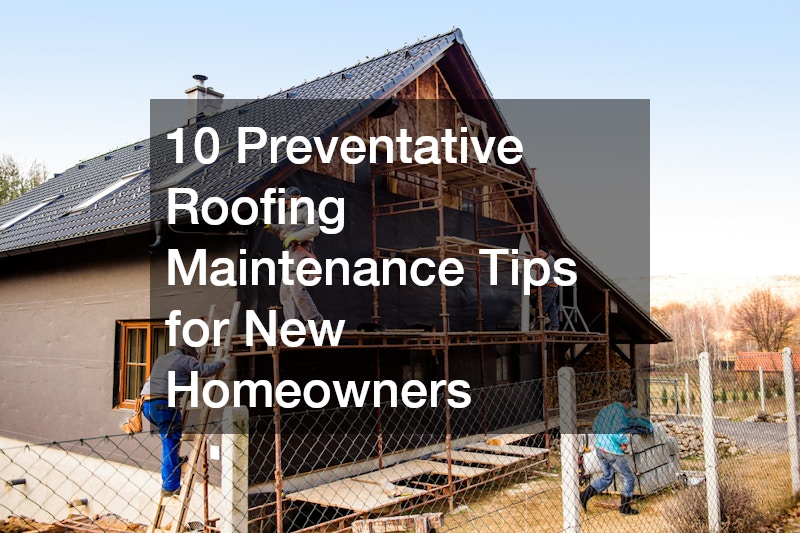When it comes to maintaining the integrity of your roof, preventative roofing maintenance is key. By staying proactive and addressing potential issues before they escalate, you can save yourself time, money, and stress in the long run. In this comprehensive guide, we will explore ten essential tips for keeping your roof in top condition. From inspecting your roof twice a year to scheduling professional inspections, we’ve got you covered. Read on to learn how you can protect your investment and ensure the longevity of your roof.
1. Inspect Your Roof Twice a Year
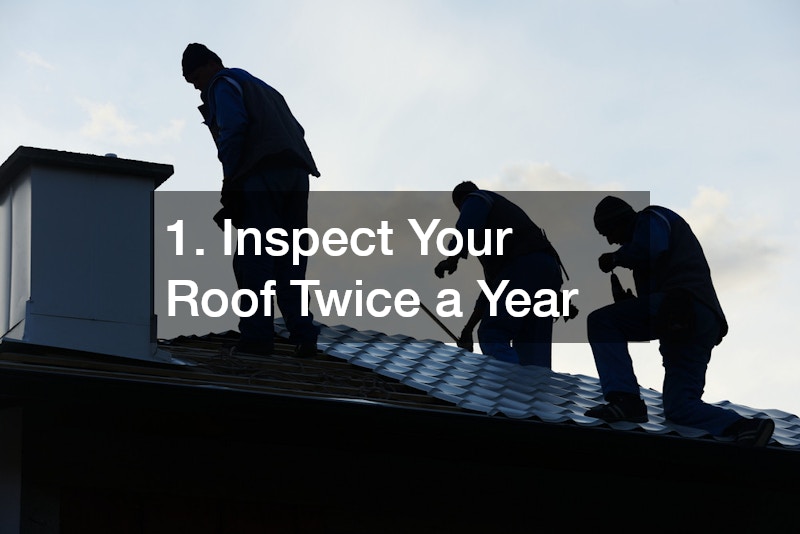
One of the most important aspects of preventative roofing maintenance is to inspect your roof at least twice a year. By hiring local roofing contractors, you can ensure that any potential issues are identified and addressed promptly. These inspections can help you catch minor problems before they turn into major repairs, saving you both time and money in the long run.
Roofing maintenance involves checking for loose or missing shingles, signs of water damage, and any other visible issues that may compromise the structural integrity of your roof. By staying proactive and addressing these issues early on, you can extend the lifespan of your roof and avoid costly repairs down the line.
Regular inspections also allow you to assess the overall condition of your roof and make any necessary repairs or replacements as needed. By implementing a preventative maintenance routine, you can keep your roof in top shape year-round and protect your home from potential water damage and leaks.
2. Clean Gutters and Downspouts Regularly
Another essential aspect of preventative roofing maintenance is to clean your gutters and downspouts regularly. Hiring a residential roofer to clear out debris and ensure proper drainage can prevent water backup and overflow, which can lead to roof damage and leaks. By keeping your gutters clean, you can protect your roof from water-related issues and maintain its structural integrity.
Roofing maintenance involves ensuring that your gutters are free of debris, such as leaves, twigs, and dirt, that can clog the system and prevent proper drainage. By regularly cleaning your gutters and downspouts, you can prevent water from pooling on your roof and causing damage to the shingles and underlying structure. This simple maintenance task can go a long way in extending the lifespan of your roof and protecting your home from water damage.
In addition to cleaning your gutters, it’s also important to inspect them for any signs of damage, such as rust, corrosion, or sagging. By addressing these issues promptly, you can prevent further damage to your roof and ensure that your gutters are functioning properly to protect your home from water infiltration.
3. Trim Trees and Overhanging Branches
As part of roofing maintenance, it’s crucial to regularly trim trees and overhanging branches that could potentially damage your roof. Hiring roof decking services can help you safely remove any branches that are too close to your roof and pose a risk of falling during storms or high winds. By keeping trees trimmed, you can prevent damage to your roof and avoid costly repairs.
Preventative roofing maintenance involves assessing the proximity of trees to your roof and ensuring that branches are not touching or rubbing against the shingles. By trimming back branches that are too close, you can minimize the risk of debris falling onto your roof and causing damage. This proactive approach can help prolong the lifespan of your roof and protect your home from potential hazards.
In addition to trimming trees, it’s important to inspect your roof for any signs of existing damage caused by overhanging branches. By addressing these issues early on, you can prevent further damage and maintain the structural integrity of your roof. By incorporating tree trimming into your preventative maintenance routine, you can safeguard your roof and enhance its longevity.
4. Look for Signs of Moss or Algae Growth
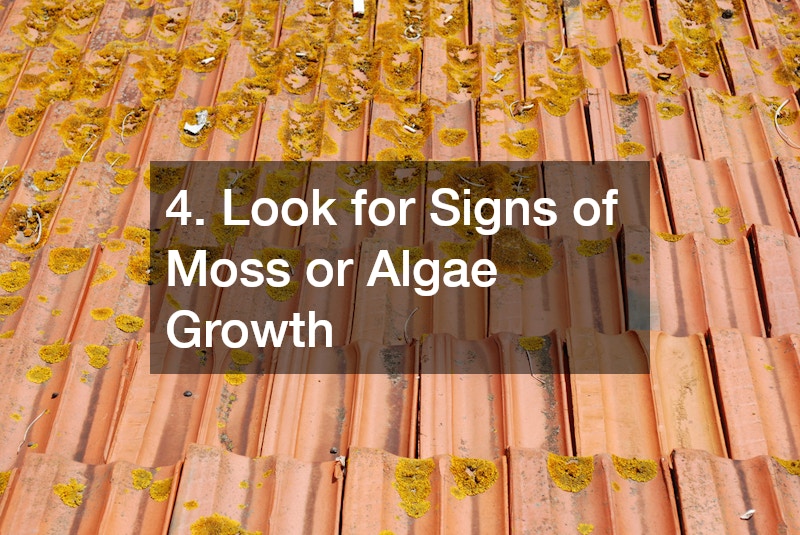
As part of preventative roofing maintenance, it’s essential to keep an eye out for signs of moss or algae growth on your roof. If left unchecked, moss and algae can trap moisture and cause damage to your shingles, leading to premature deterioration. By hiring roof replacements services to remove moss and algae, you can protect your roof and prevent costly repairs.
Roofing maintenance involves inspecting your roof for any moss or algae growth and taking prompt action to address the issue. By cleaning and treating your roof to remove moss and algae, you can prevent further damage and extend the lifespan of your shingles. Regular inspections can help you identify and treat this common problem before it escalates.
In addition to removing moss and algae, it’s crucial to address the underlying cause of the issue, such as poor ventilation or excess moisture. By addressing these factors, you can prevent future growth and protect your roof from damage. By staying proactive and incorporating moss and algae removal into your preventative maintenance routine, you can ensure the long-term health of your roof.
5. Check for Damaged or Missing Shingles
Another vital aspect of preventative roofing maintenance is to regularly check for damaged or missing shingles. By hiring residential roofing companies to conduct a thorough inspection, you can identify any shingles that may need repair or replacement. By addressing these issues promptly, you can prevent water infiltration and protect your home from leaks.
Roofing maintenance involves visually inspecting your roof for any signs of damaged or missing shingles, such as cracks, curling, or warping. By addressing these issues promptly, you can prevent further damage and extend the lifespan of your roof. Regular inspections can help you catch minor problems before they escalate, saving you time and money in the long run.
In addition to checking for damaged shingles, it’s important to also inspect the flashing around vents, chimneys, and skylights for signs of wear or damage. By addressing these issues promptly, you can prevent water infiltration and protect your home from leaks. By incorporating shingle inspections into your preventative maintenance routine, you can ensure the longevity of your roof and maintain its structural integrity.
6. Inspect Flashing Around Vents and Chimneys
As part of preventative roofing maintenance, it’s crucial to inspect the flashing around vents and chimneys for signs of wear or damage. Hiring a local roofer to assess the condition of the flashing can help you identify any issues that may compromise the integrity of your roof. By addressing these issues promptly, you can prevent water infiltration and protect your home from leaks.
Roofing maintenance involves inspecting the flashing around vents, chimneys, and skylights for signs of wear, rust, or damage. By addressing these issues promptly, you can prevent water penetration and extend the lifespan of your roof. Regular inspections can help you catch minor problems before they turn into costly repairs, saving you both time and money.
In addition to inspecting the flashing, it’s important to ensure that it is properly sealed and secured to prevent water infiltration. By addressing any issues with the flashing promptly, you can protect your home from leaks and water damage. By incorporating flashing inspections into your preventative maintenance routine, you can keep your roof in top condition and avoid potential issues down the line.
7. Maintain Attic Ventilation and Insulation
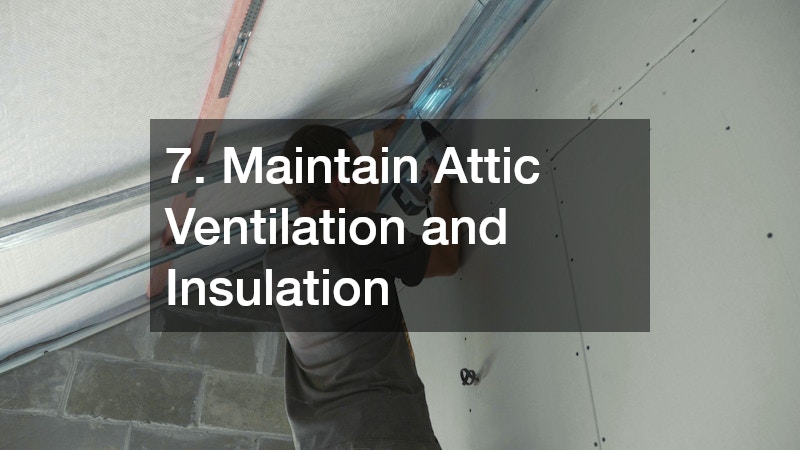
Another key aspect of preventative roofing maintenance is to maintain proper attic ventilation and insulation. Hiring a roof washing service can help you keep your attic well-ventilated and insulated, preventing moisture buildup and preserving the integrity of your roof. By ensuring that your attic is properly ventilated and insulated, you can reduce the risk of mold, mildew, and wood rot.
Roofing maintenance involves checking your attic for proper ventilation and insulation to prevent heat and moisture buildup. By addressing any issues with ventilation or insulation, you can protect your roof from potential damage and extend its lifespan. Regular maintenance can help you identify and address these issues before they escalate, saving you both time and money in the long run.
In addition to maintaining attic ventilation and insulation, it’s important to ensure that your attic is free of debris, such as insulation or animal nests, that can obstruct airflow. By keeping your attic clean and well-maintained, you can prevent moisture buildup and protect your roof from damage. By incorporating attic maintenance into your preventative maintenance routine, you can safeguard your roof and ensure its long-term health.
8. Monitor for Interior Water Stains
As part of preventative roofing maintenance, it’s essential to monitor your home for interior water stains. Hiring local siding contractors to inspect your walls and ceilings for any signs of water damage can help you identify potential roof leaks. By addressing these issues promptly, you can prevent further damage and protect your home from water infiltration.
Roofing maintenance involves checking your ceilings, walls, and attic for any signs of water stains or discoloration that may indicate a roof leak. By identifying these issues early on, you can address the underlying cause and prevent further damage. Regular inspections can help you catch minor problems before they escalate, saving you both time and money in the long run.
In addition to monitoring for water stains, it’s important to address any leaks or water damage promptly to prevent mold growth and structural damage. By taking proactive measures to repair leaks and water damage, you can protect your home from potential hazards. By incorporating interior inspections into your preventative maintenance routine, you can ensure the overall health of your roof and home.
9. Address Ice Dams Promptly
Another crucial aspect of preventative roofing maintenance is to address ice dams promptly. Hiring local roof repairs services can help you remove ice dams and prevent damage to your roof and gutters. By addressing ice dams early on, you can prevent water backup and reduce the risk of leaks and water damage.
Roofing maintenance involves monitoring your roof for ice dams during the winter months and taking prompt action to address them. By removing ice dams and ensuring proper insulation and ventilation, you can protect your roof from potential damage. Regular inspections can help you identify and address ice dams before they cause significant issues, saving you both time and money in the long run.
In addition to addressing ice dams, it’s important to address any underlying issues that may be contributing to their formation, such as inadequate insulation or poor ventilation. By addressing these factors, you can prevent future ice dams and protect your roof from damage. By staying proactive and incorporating ice dam removal into your preventative maintenance routine, you can safeguard your home from winter-related issues.
10. Schedule Professional Roof Inspections
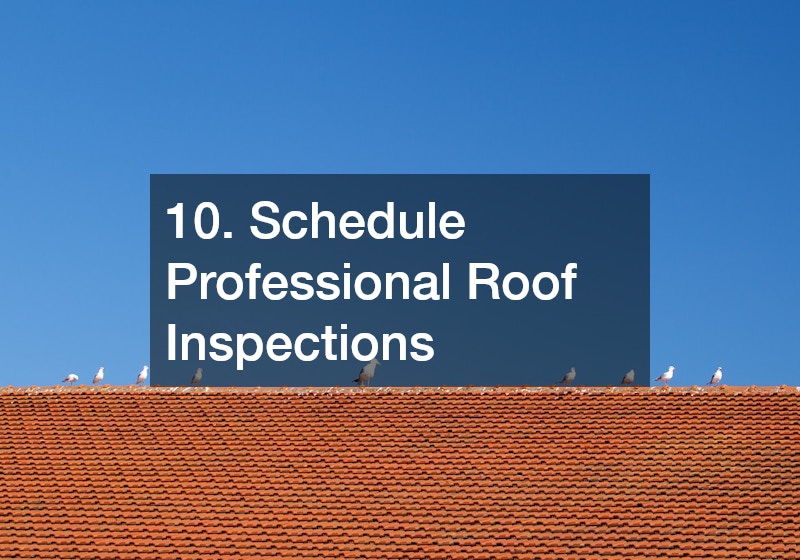
Last but not least, scheduling professional roof inspections is a vital component of preventative roofing maintenance. Hiring a reputable roofing company to conduct regular inspections can help you identify and address potential issues before they escalate. By investing in professional inspections, you can have peace of mind knowing that your roof is in top condition.
Roofing maintenance involves scheduling annual or bi-annual inspections with a qualified roofing company to assess the condition of your roof. By conducting thorough inspections, you can catch minor problems early on and prevent costly repairs down the line. Professional roof inspections can help you maintain the integrity of your roof and extend its lifespan.
In addition to inspecting your roof, professional contractors can provide recommendations for maintenance and repairs to keep your roof in top shape. By following their advice and addressing any issues promptly, you can protect your home from potential damage and ensure the longevity of your roof. By incorporating professional roof inspections into your preventative maintenance routine, you can take proactive measures to safeguard your investment.
Preventative roofing maintenance is essential for preserving the integrity of your roof and protecting your home from potential damage. By following the ten tips outlined in this guide, you can stay proactive and address issues before they escalate. From inspecting your roof twice a year to scheduling professional inspections, each step plays a crucial role in ensuring the longevity of your roof. By incorporating these preventative measures into your maintenance routine, you can save yourself time, money, and stress in the long run. Keep your roof in top condition and enjoy peace of mind knowing that your home is well-protected.
